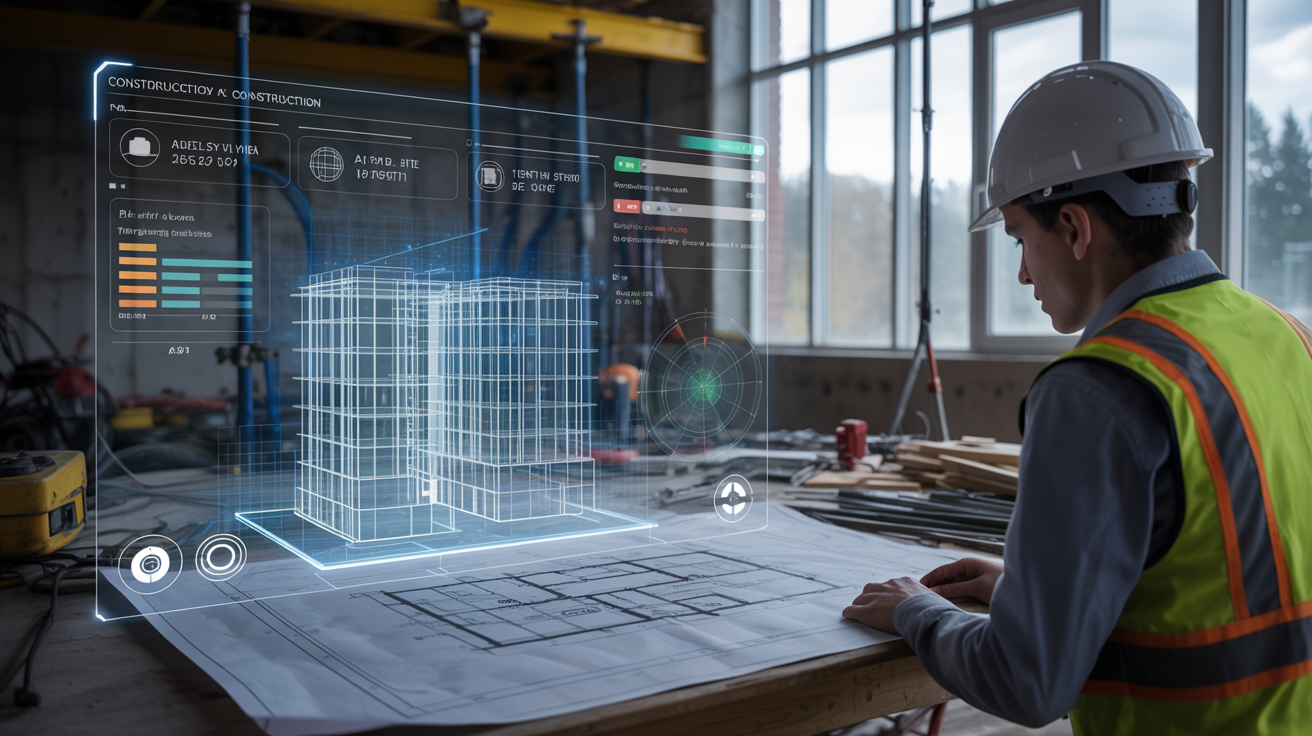The construction industry, historically reliant on manual labor, traditional project management, and conventional safety practices, is undergoing a dramatic transformation fueled by artificial intelligence (AI). As one of the largest global industries with complex workflows, high-risk environments, and tight schedules, construction is embracing AI technologies to revolutionize planning processes and enhance safety standards. This article explores how AI is reshaping construction, leading to smarter project management, improved risk mitigation, and a safer work environment.
The Need for AI in Construction
Construction projects often face delays, budget overruns, and safety hazards. According to industry reports, approximately 30% of construction projects exceed their budgets, and safety incidents remain alarmingly frequent despite ongoing efforts. The complexity of coordinating multiple teams, managing resources, and complying with regulations requires smarter tools. AI offers capabilities that surpass human limitations in data processing, pattern recognition, and predictive analytics, making it an ideal solution to modernize construction workflows.
Revolutionizing Planning with AI
1. Intelligent Project Scheduling and Resource Allocation
Traditional construction planning relies heavily on experience and static schedules that often fail to adapt to real-time changes. AI-driven project management platforms analyze historical data, current progress, weather forecasts, and supply chain information to generate dynamic schedules that optimize resource allocation. Machine learning models can predict potential bottlenecks or delays, enabling project managers to proactively adjust plans, avoid downtime, and reduce costs.
For example, AI tools can analyze the availability of materials, labor, and equipment to ensure they arrive just in time, minimizing inventory costs and idle resources. This dynamic approach helps improve efficiency and adherence to timelines.
2. Enhanced Design and Building Information Modeling (BIM)
Building Information Modeling (BIM) has become a cornerstone of modern construction, providing detailed 3D digital representations of buildings. AI takes BIM to the next level by automating clash detection, suggesting design improvements, and simulating construction sequences.
By integrating AI with BIM, architects and engineers can automatically detect design conflicts (such as pipe clashes or structural interferences) before construction begins, drastically reducing costly rework. AI-powered generative design tools can also propose innovative architectural solutions that balance aesthetics, functionality, and cost-effectiveness based on predefined parameters.
3. Predictive Analytics for Cost and Risk Management
AI analyzes vast datasets from past projects to predict potential cost overruns and identify risk factors early in the planning phase. Predictive analytics help construction firms quantify uncertainties, improve budgeting accuracy, and make data-driven decisions.
Moreover, AI can simulate various project scenarios to assess their impacts, allowing stakeholders to choose the best course of action. This predictive capability enhances project transparency and accountability.
Enhancing Safety on Construction Sites with AI
Safety remains a critical challenge in construction due to the physically demanding and hazardous nature of the work. AI-powered technologies are creating safer work environments by identifying risks, monitoring compliance, and preventing accidents.
1. Real-Time Hazard Detection and Monitoring
AI-enabled computer vision systems using cameras and drones can continuously monitor construction sites for safety hazards such as falls, equipment misuse, and unauthorized access to dangerous zones. These systems use deep learning algorithms to recognize unsafe behaviors or environmental risks and alert supervisors immediately.
For instance, AI-powered wearables equipped with sensors can monitor workers’ vital signs and detect fatigue or exposure to harmful substances, prompting timely interventions.
2. Automated Safety Inspections
Manual safety inspections are time-consuming and prone to human error. AI automates this process by analyzing images and sensor data to identify compliance issues or potential hazards. Drones equipped with AI cameras can inspect hard-to-reach areas like scaffolding and rooftops, providing detailed reports without putting inspectors at risk.
This automation speeds up safety audits and ensures consistent monitoring standards.
3. Predictive Safety Analytics
By analyzing historical accident data and site conditions, AI can predict the likelihood of safety incidents and recommend preventive measures. For example, AI can identify patterns indicating a higher risk of falls or equipment failures and suggest enhanced training or maintenance protocols.
Predictive safety analytics empower companies to adopt a proactive rather than reactive approach to workplace safety.
Challenges and Considerations
While AI offers immense benefits, its adoption in construction is not without challenges. Integrating AI systems requires significant upfront investment, workforce training, and cultural shifts within organizations. Data privacy and security concerns also arise as more sensitive project and worker information is digitized.
Furthermore, AI models require high-quality data to function effectively, and inconsistent or incomplete construction data can limit their accuracy. Therefore, companies must invest in robust data collection and management practices.
Future Outlook: AI as a Standard in Construction
As AI technologies mature and become more accessible, their role in construction will expand beyond planning and safety to areas like automated machinery, supply chain optimization, and sustainability efforts.
Robotic construction equipment powered by AI will handle repetitive or dangerous tasks, further reducing risks. AI-driven energy modeling will help design greener buildings, contributing to global sustainability goals.
The integration of AI with other emerging technologies such as augmented reality (AR), virtual reality (VR), and the Internet of Things (IoT) will create a connected ecosystem where all project stakeholders collaborate seamlessly with enhanced visibility and control.
Conclusion
Artificial intelligence is revolutionizing the construction industry by transforming planning processes and significantly enhancing safety standards. Through intelligent project scheduling, advanced design optimization, predictive analytics, and real-time hazard monitoring, AI empowers construction firms to deliver projects on time, within budget, and with fewer accidents.
Despite challenges in implementation, the long-term benefits of AI adoption—including improved efficiency, cost savings, and worker protection—make it an indispensable tool for the future of construction. As the industry continues to evolve, embracing AI will be crucial to building smarter, safer, and more sustainable infrastructure worldwide.


